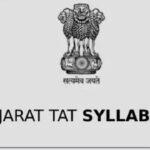Table of Contents
1. Introduction
1.1 Overview of the Respiratory System
2. Function of the Respiratory System
2.1 Breathing and Gas Exchange
2.2 Regulation of Blood pH
2.3 Protection and Filtration
2.4 Voice Production and Communication
2.5 Sense of Smell
2.6 Importance and Facts
3. The Respiratory System: Journey of Breath
3.1 Inhalation
3.2 Trachea and Bronchial Tree
3.3 Alveoli and Gas Exchange
3.4 Oxygen Transport
3.5 Circulation
3.6 Carbon Dioxide Transport
3.7 Exhalation
3.8 Continuation of the Process
4. Components of the Respiratory System: The Breath of Life
4.1 Nose and Mouth
4.2 Pharynx and Larynx
4.3 Trachea (Windpipe) and Bronchial Tree
4.4 Lungs and Alveoli
4.5 Diaphragm and Intercostal Muscles
4.6 Pleura and Pleural Cavity
4.7 Importance of the Respiratory System
5. Respiratory System Diseases:
5.1 Asthma
5.2 Chronic Obstructive Pulmonary Disease (COPD)
5.3 Pneumonia
5.4 Tuberculosis (TB)
5.5 Lung Cancer
5.6 Ayurvedic Treatment
6. Conclusion
6.1 Recap of the Respiratory System
6.2 Significance of Respiratory Health
6.3 Importance of Preventive Measures
6.4 Acknowledging the Gift of Life

Introduction : The Respiratory System
The respiratory system is a marvel of biological engineering that enables us to breathe, supplying our bodies with the life-giving oxygen necessary for survival. It works tirelessly, day in and day out, to ensure the exchange of gases that fuel every cell in our bodies. Beyond its crucial role in breathing, the respiratory system plays a significant part in maintaining acid-base balance, filtering air, and even contributing to our sense of smell. Let’s dive into the fascinating world of the respiratory system, exploring its functions, components, and common diseases.
Function of the Respiratory System:
The respiratory system is a complex and essential system that allows us to breathe and perform the crucial process of gas exchange. Through this system, our bodies obtain oxygen, vital for energy production, and eliminate carbon dioxide, a waste product of metabolism. Let’s dive deeper into the functions, individual components, roles, importance, and interesting facts of the respiratory system:

1. Breathing and Gas Exchange:
- Function: The primary function of the respiratory system is to facilitate the process of breathing, which involves the intake of oxygen and the expulsion of carbon dioxide.
- Role: It ensures a continuous supply of oxygen to all cells and tissues in the body, necessary for cellular respiration and energy production.
- Importance: Without oxygen, cells cannot generate the energy needed to carry out essential functions, leading to organ failure and ultimately, death.
- Facts: On average, a person takes about 12 to 20 breaths per minute at rest, but this rate can increase during physical activity.
2. Regulation of Blood pH:
- Function: The respiratory system plays a crucial role in regulating the body’s acid-base balance by controlling the levels of carbon dioxide in the blood.
- Role: When carbon dioxide levels rise, it combines with water in the blood to form carbonic acid, which lowers blood pH. To maintain balance, we breathe faster to expel excess carbon dioxide.
- Importance: Proper pH regulation is essential for various physiological processes and enzyme activity. Acid-base imbalances can lead to serious health issues.
- Facts: The respiratory system works in conjunction with the kidneys to maintain blood pH within a narrow range.
3. Protection and Filtration:
- Function: The respiratory system is equipped with defense mechanisms to protect the delicate lung tissues from harmful particles and pathogens.
- Role: Tiny hair-like structures called cilia line the respiratory passages and help trap and remove dust, debris, and microorganisms.
- Importance: Protecting the lungs from foreign invaders prevents infections and potential damage to the respiratory system.
- Facts: Smoking damages the cilia, reducing their effectiveness and increasing the risk of respiratory infections.
4. Voice Production and Communication:
- Function: The larynx, or voice box, is responsible for voice production and sound modulation.
- Role: The vocal cords in the larynx vibrate when air passes through them, producing sound waves that create our voices.
- Importance: Voice production is essential for communication and expression, enabling us to convey ideas, emotions, and information.
- Facts: The pitch of our voice is determined by the tension of the vocal cords, which can be adjusted voluntarily.
5. Sense of Smell:
- Function: The respiratory system enables the sense of smell through the olfactory receptors located in the nasal cavity.
- Role: When we breathe in, odor molecules bind to these receptors, sending signals to the brain, leading to the sensation of smell.
- Importance: The sense of smell enhances our ability to detect danger, enjoy food, and experience the world around us.
- Facts: The human nose can distinguish thousands of different smells.
Importance and Facts:
- The respiratory system works in coordination with the cardiovascular system to deliver oxygen and nutrients throughout the body.
- The average person breathes in approximately 7 to 8 liters of air per minute, depending on activity levels.
- In one day, a person takes around 17,000 to 30,000 breaths, reflecting the constant and vital nature of respiration.
- Smoking and exposure to air pollution can damage the respiratory system and lead to various respiratory diseases, such as chronic obstructive pulmonary disease (COPD) and lung cancer.
- Maintaining good respiratory health through regular exercise, a balanced diet, and avoiding smoking is crucial for overall well-being and longevity.
- Breathing exercises and mindfulness techniques can help reduce stress, promote relaxation, and improve lung capacity.
The Respiratory System: Journey of Breath
The respiratory system is a remarkable process that begins with the inhalation of fresh air and culminates in the exchange of gases within our body. Let’s take a journey through the entire process of the respiratory system, from the start to the end:
1. Inhalation:
- The process starts as we inhale air through the nose and/or mouth.
- The air passes through the nasal cavity, where it gets warmed, humidified, and filtered by tiny hairs called cilia and mucus, which trap dust and particles.
- The air then travels down the pharynx and enters the trachea, also known as the windpipe.
2. Trachea and Bronchial Tree:
- The trachea is a rigid tube made of cartilage rings that keeps it open and prevents collapse.
- The trachea further divides into two main bronchi, one for each lung.
- Within the lungs, the bronchi continue to divide into smaller bronchioles, forming the bronchial tree.
3. Alveoli and Gas Exchange:
- At the end of the bronchial tree, there are millions of tiny air sacs called alveoli.
- The alveoli are surrounded by an extensive network of blood capillaries.
- This is where the crucial process of gas exchange occurs. Oxygen from the inhaled air diffuses into the blood in the capillaries, while carbon dioxide from the blood diffuses into the alveoli.
4. Oxygen Transport:
- Oxygen binds to hemoglobin, a protein present in red blood cells.
- The oxygen-rich blood is then carried away from the lungs by the pulmonary veins, and it returns to the heart.
5. Circulation:
- The heart pumps oxygenated blood throughout the body via the systemic circulation.
- This oxygen is utilized by cells in various tissues and organs for energy production.
6. Carbon Dioxide Transport:
- As cells use oxygen, they produce carbon dioxide as a waste product.
- Carbon dioxide is transported back to the lungs via the bloodstream.
7. Exhalation:
- During exhalation, the waste carbon dioxide is expelled from the body.
- The diaphragm, a dome-shaped muscle below the lungs, and the intercostal muscles contract, reducing the volume of the chest cavity and forcing air out of the lungs.
- The air containing carbon dioxide is exhaled through the trachea and expelled from the nose and/or mouth.
8. Continuation of the Process:
- This process of inhalation, gas exchange, oxygen transport, circulation, carbon dioxide transport, and exhalation continues throughout our lives, ensuring a constant supply of oxygen and removal of carbon dioxide.
Components of the Respiratory System:
The respiratory system is a complex network of organs and structures that work together to facilitate the process of breathing and ensure the exchange of gases that sustain life. Let’s explore the components of the respiratory system, their individual functions, roles, and importance in simpler terms:

1. Nose and Mouth:
- Function: The nose and mouth are the entry points for air to enter the respiratory system.
- Role: They filter, warm, and moisten the inhaled air, removing dust and harmful particles.
- Importance: Clean and conditioned air is essential for healthy lungs and overall respiratory health.
2. Pharynx and Larynx:
- Function: The pharynx and larynx are passages that connect the nose and mouth to the trachea (windpipe).
- Role: The larynx contains the vocal cords, which vibrate to produce sound when we speak.
- Importance: The larynx protects the airway during swallowing, preventing food from entering the trachea.
3. Trachea (Windpipe) and Bronchial Tree:
- Function: The trachea is a sturdy tube that carries air from the nose and mouth to the lungs. It divides into two main bronchi, one for each lung.
- Role: The trachea and bronchi maintain an open airway, preventing collapse during breathing.
- Importance: These structures are vital for the smooth flow of air into the lungs, allowing for proper gas exchange.
4. Lungs and Alveoli:
- Function: The lungs are the primary organs of the respiratory system. Inside the lungs, there are millions of tiny air sacs called alveoli.
- Role: The alveoli facilitate the exchange of oxygen and carbon dioxide between the air and blood.
- Importance: Oxygen is essential for energy production in cells, while carbon dioxide is a waste product that needs to be eliminated.
5. Diaphragm and Intercostal Muscles:
- Function: The diaphragm is a dome-shaped muscle beneath the lungs, and the intercostal muscles are between the ribs.
- Role: These muscles work together to create the necessary pressure changes in the chest, allowing for inhalation and exhalation.
- Importance: Proper muscle function ensures efficient breathing and adequate gas exchange.
6. Pleura and Pleural Cavity:
- Function: The pleura is a double-layered membrane that surrounds each lung, and the pleural cavity is the space between these layers.
- Role: The pleura reduces friction during breathing, allowing the lungs to expand and contract smoothly.
- Importance: This membrane and cavity help maintain lung elasticity and prevent lung collapse.
Importance of the Respiratory System:
- The respiratory system ensures that our body receives a continuous supply of oxygen, which is crucial for cellular respiration and energy production.
- It eliminates carbon dioxide, a waste product of metabolism, preventing it from building up in the body and causing harmful effects.
- The respiratory system supports the immune system by filtering out harmful particles and microbes present in the air we breathe.
- Proper respiratory function is vital for maintaining the body’s acid-base balance, ensuring blood pH remains stable.
- The respiratory system is essential for speech production and communication.
Respiratory System Diseases:
The respiratory system is vital for breathing, allowing the exchange of oxygen and carbon dioxide in the body. However, various diseases can affect this system, leading to respiratory problems. Here are some common respiratory diseases, their causes, symptoms, conventional treatments, and the Ayurvedic approach to managing them:

1. Asthma:
- Definition: Asthma is a chronic respiratory condition characterized by inflammation and narrowing of the airways, causing difficulty in breathing.
- Causes: Asthma can be triggered by allergens, respiratory infections, cold air, smoke, exercise, and stress. It may also have a genetic component.
- Symptoms: Wheezing, coughing (especially at night or early morning), shortness of breath, and chest tightness.
- Conventional Treatment: Inhalers and medications to control inflammation and relax airway muscles.
- Ayurvedic Approach: Balancing the doshas, reducing inflammation, and improving lung function using herbs like Vasaka, Tulsi, and Yashtimadhu. Pranayama and Yoga help strengthen the respiratory system.
2. Chronic Obstructive Pulmonary Disease (COPD):
- Definition: COPD is a progressive lung disease that obstructs airflow, making it difficult to breathe.
- Causes: Long-term exposure to irritants like cigarette smoke, air pollution, and workplace fumes.
- Symptoms: Chronic cough, shortness of breath (worsening over time), wheezing, and frequent respiratory infections.
- Conventional Treatment: Bronchodilators, corticosteroids, and oxygen therapy to manage symptoms and improve lung function.
- Ayurvedic Approach: Reducing dosha imbalances, using herbs like Turmeric, Guggul, and Pippali to support lung health. Pranayama and lifestyle modifications are beneficial.
3. Pneumonia:
- Definition: Pneumonia is an infection that inflames the air sacs in one or both lungs, leading to fluid or pus accumulation.
- Causes: Bacterial, viral, or fungal infections. Pneumonia can also result from aspiration of food or liquid into the lungs.
- Symptoms: Fever, chills, cough with phlegm, difficulty breathing, chest pain, and fatigue.
- Conventional Treatment: Antibiotics, antivirals, and supportive care to manage symptoms and aid recovery.
- Ayurvedic Approach: Herbal remedies like Tulsi, Ginger, and Ashwagandha for immune support and respiratory health. Warm steam inhalation and proper rest are recommended.
4. Tuberculosis (TB):
- Definition: Tuberculosis is a bacterial infection caused by Mycobacterium tuberculosis, primarily affecting the lungs but can affect other organs too.
- Causes: Inhalation of TB bacteria from infected individuals through coughs and sneezes.
- Symptoms: Persistent cough, weight loss, night sweats, fatigue, and chest pain.
- Conventional Treatment: A combination of antibiotics to treat and cure active TB, along with latent TB infection treatment.
- Ayurvedic Approach: Boosting immunity with herbs like Guduchi and Amalaki, along with Rasayana therapy for rejuvenation.
5. Lung Cancer:
- Definition: Lung cancer is the uncontrolled growth of abnormal cells in the lungs, usually caused by smoking or exposure to carcinogens.
- Causes: Smoking, secondhand smoke, asbestos, radon, and air pollution.
- Symptoms: Persistent cough, chest pain, shortness of breath, weight loss, and coughing up blood.
- Conventional Treatment: Surgery, chemotherapy, radiation, and targeted therapies.
- Ayurvedic Approach: Ayurvedic herbs like Triphala and Guduchi to support overall health and well-being.
Ayurvedic Treatment:
- Ayurveda aims to balance doshas, improve lung function, and strengthen the respiratory system.
- Herbal Remedies: Ayurvedic herbs like Vasaka, Tulsi, Yashtimadhu, Turmeric, Guggul, and others are used for their anti-inflammatory and immune-boosting properties.
- Pranayama: Breathing exercises like Anulom Vilom and Bhramari are beneficial for respiratory health.
- Panchakarma: Detoxification therapies like Vamana and Virechana may be used to remove toxins and restore balance.
Importance:
- Respiratory diseases can significantly impact quality of life and lead to severe complications if left untreated.
- Ayurvedic treatments focus on addressing the root cause, strengthening immunity, and promoting overall well-being.
Note: Ayurvedic treatments should always be used under the guidance of a qualified Ayurvedic practitioner. It’s essential to combine Ayurvedic care with conventional medical treatments for optimal management of respiratory diseases. Always consult your healthcare provider before starting any new treatment regimen.
conclusion :
The respiratory system is a remarkable and essential part of our body, enabling the intake of life-sustaining oxygen and the elimination of carbon dioxide. Its intricate network of organs and tissues, such as the lungs, bronchi, and diaphragm, work harmoniously to ensure proper breathing and gas exchange. The respiratory system not only supports physical well-being but also affects overall health and quality of life. Respiratory diseases can pose significant challenges, emphasizing the importance of preventive measures, healthy habits, and prompt medical attention. Understanding and caring for our respiratory system is vital for leading a fulfilling and healthy life, as every breath we take sustains us and reminds us of the gift of life itself.







